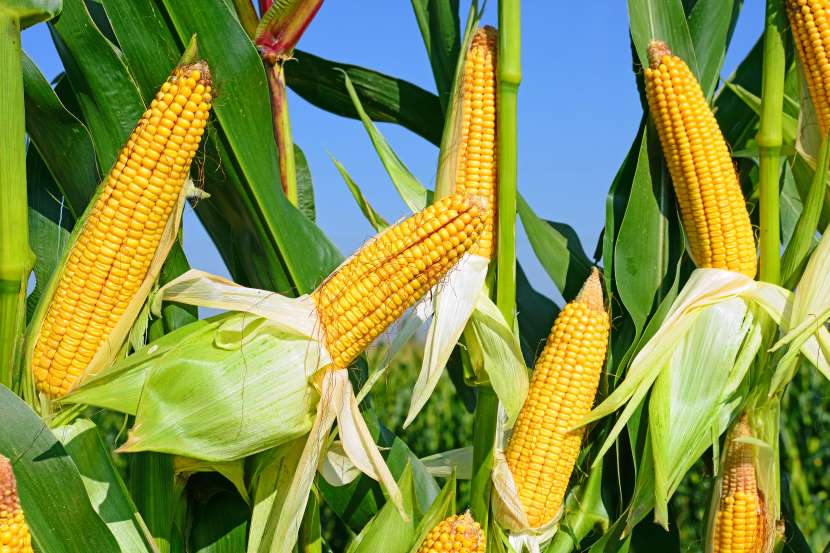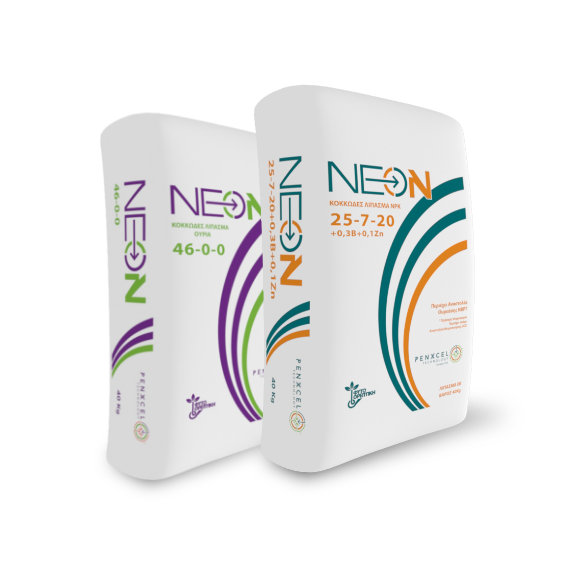
Maize (Zea mays L.) is one of the most important annual spring crops for Greece. Rational fertilization of maize plays an important role in increasing yields and improving its quality characteristics.
Surface fertilization of maize mainly involves the application of a significant amount of N during the crop’s growth in order to cover the second peak of N requirements (50-70% of annual requirements).
Nitrogen (N) is an element of great importance for life and the environment. Plants are fundamentally dependent on it, as it is the nutrient they need in the largest quantities. It is a component of many plant cell compounds, which include amino acids, hormones, nucleic acids and chlorophyll. It is therefore understood that nitrogen deficiency rapidly impairs plant growth and vigour.
Maize is a highly productive plant. For this reason, its nutrient requirements for nitrogen are particularly high. A lack of nitrogen leads to a reduction in the number and weight of seeds, as well as a reduction in biomass, with significant effects on both yield and quality.
It has been estimated that the maximum N requirements of maize are between the 75th and 90th day after germination. Phenologically, this is the period between the flowering of the tassel and the stalks. At the same time, high N requirements have also been observed at the seed filling stage.
Therefore, the reasons why the N balance in maize is considered one of the most critical nutritional factors determining yield and quality traits can be understood.
Nitrogen management, however, is a unique and complex process. Because of its peculiar forms in the soil, it has been estimated that 50-70% of the nitrogen applied to the soil is lost. Therefore, improving the Nitrogen Use Efficiency (NUE) Index is a prerequisite for us to optimize crop yields and agricultural income while minimizing N losses to the environment.
The choice of nitrogen fertilisers shall be made in such a way as to avoid nitrogen losses due to ammonia volatilisation or leaching.
The term ‘slow-release fertilisers’ or ‘stabilised fertilisers’ refers to fertilisers containing urease inhibitors and/or nitrification inhibitors.
Urease inhibitors based on triamide thiophosphate triamide (NBPT) lock the binding sites of the urease enzyme. In this way, they delay the conversion of urea to ammonia ions (NH4+) and therefore reduce the possibility of ammonia volatility (NH3).
Nitrification inhibitors based on dicyandiamide (DCD) and DMPP slow down the nitrification process by delaying the oxidation of ammonia (NH4+) to nitrogen dioxide (NO2–) and consequently to nitrate (NO3–). This minimises nitrogen losses from the soil due to nitrate (NO3–) leaching.
At PHYTOTHREPTIKI SA, innovation is a fundamental characteristic of our identity. Carefully planned management of nitrogen fertilization is, nowadays, a key priority of crop nutrition programs.
Starting from the above indications, PHYTOTHREPTIKI S.A. develops the NEON range of granular fertilizers, ideal for surface fertilization.

The NEON range incorporates the innovative PENXCEL technology which is the latest development of products with Nitrogen inhibitors. NEON products are based on both a urease inhibitor (NBPT) to prevent nitrogen losses in the form of gaseous ammonia, and a nitrification inhibitor (DCD) to reduce nitrogen losses due to leaching. Thus, by applying NEON fertilizers we ensure multiple cultural benefits:
- Balanced Nitrogen fertilization.
- Load and vegetation balancing.
- Enhance production.
- Reduced Nitrogen losses.
- Increased fertilization efficiency.
- Environmental protection.
Farmers can monitor the effectiveness of nitrogen fertilization and make the necessary corrections, always according to the recommendations of the agronomic advisor.
Because rational fertilization is always evaluated in relation to:
- Area specificity.
- Long-term observations.
- Soil composition and fertility.
- Variety.
- Foliar diagnostics.

